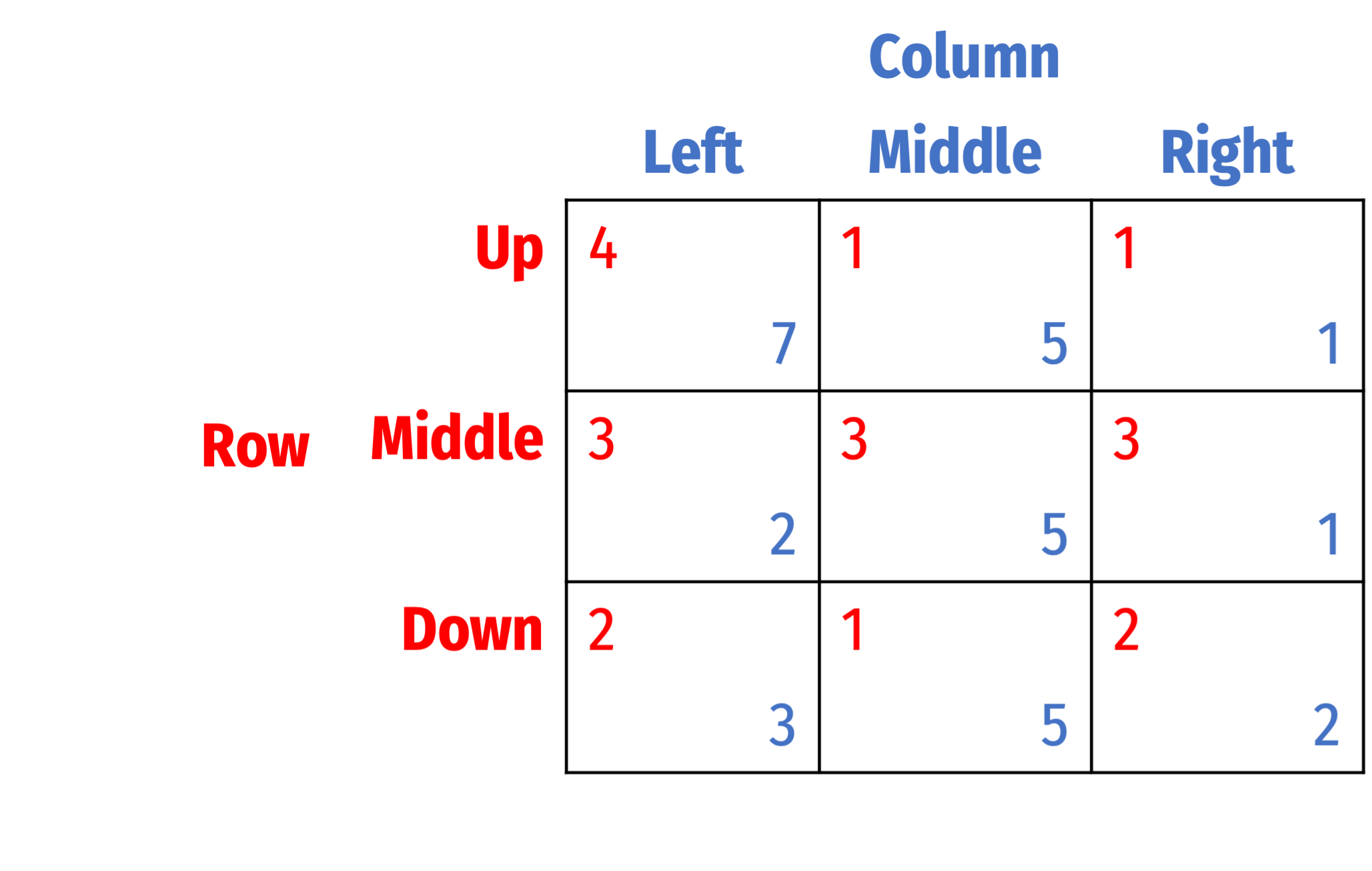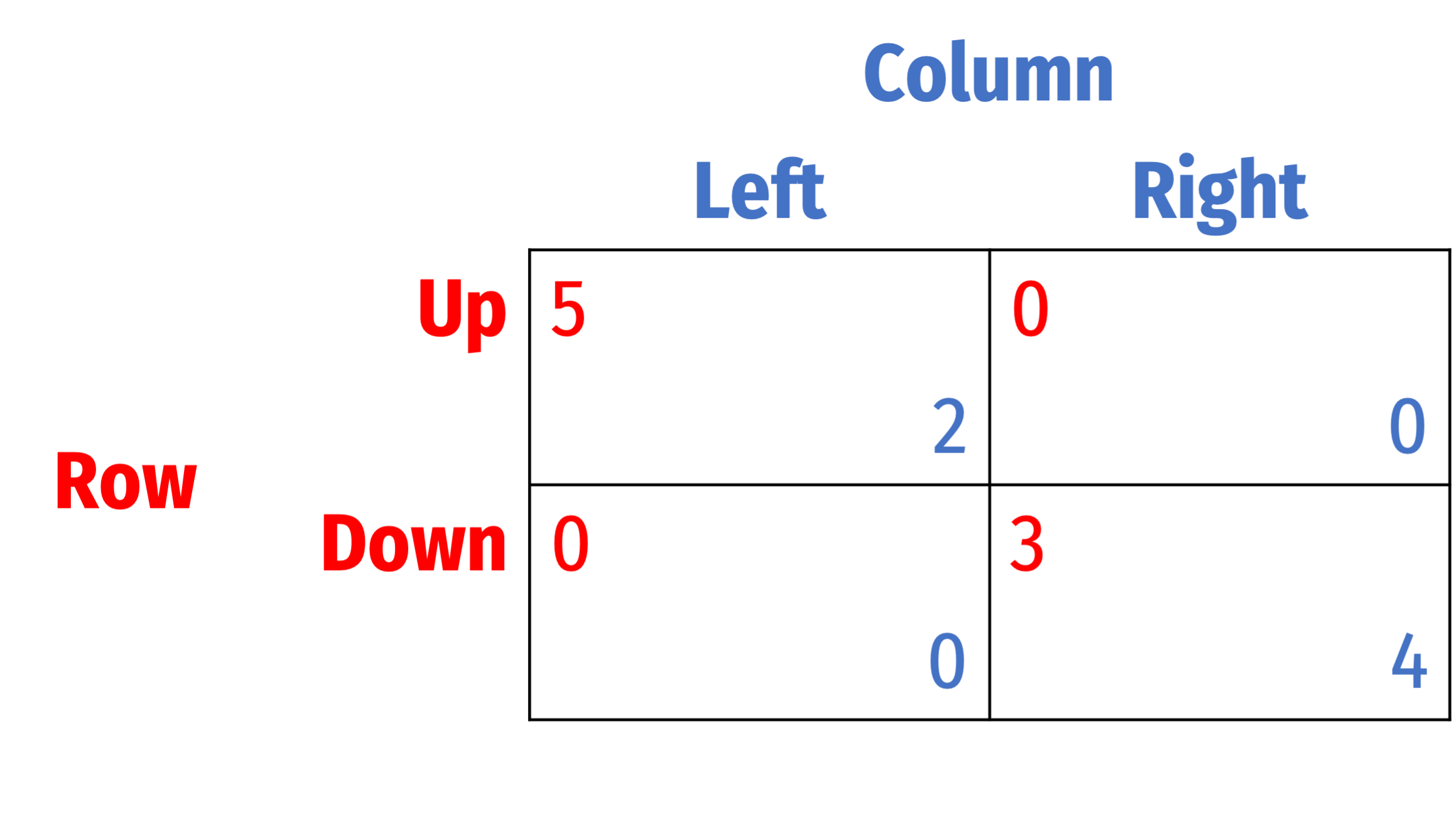Midterm Review
ECON 316 • Game Theory • Fall 2021
Ryan Safner
Assistant Professor of Economics
safner@hood.edu
ryansafner/gameF21
gameF21.classes.ryansafner.com
Major Concepts I
- Sequential Games (1.3)
- game trees
- strategy
- rollback equilibrium
- order advantages
- Simultaneous Games (1.4)
- Nash equilibrium (detection):
- Successive elimination of dominated strategies
- Best response
- Nash equilibrium refinements (1.5):
- Focal points
- Pareto efficiency
- Payoff dominance
- Risk dominance
- Rationalizability
- Nash equilibrium (detection):
Major Concepts II
- Types of Games:
- Constant sum game
- Prisoners' dilemma
- Coordination games (1.5):
- (Pure) Coordination
- Assurance (Stag Hunt)
- Battle of the Sexes
- Chicken (Hawk-Dove)
Major Concepts III
- Economics of oligopoly (2.1-2.4)
- Oligopoly as prisoners' dilemma
- Cartels
- problems and mechanisms to overcome
- Bertrand competition
- Cournot competition (& collusion)
- Stackelberg competition
- Contestable markets (2.5)
- Mixed strategies (3.1)
- Opponent indifference principle
Don't Worry About
- Harder questions on HWs/in class (meant to challenge you in low-stakes environment):
- Simultaneous games with \(>2\) players
- Cournot competition with \(>2\) firms
- Mixed strategies for \(>2\) strategies (e.g. Rock-Paper-Scissors)
Review Questions
Question 1
- Name several different refinements of Nash equilibrium.
Question 2
- Explain the differences between the three different models of oligopoly.
Question 2
Explain the differences between the three different models of oligopoly.
Which is most/least profitable to each firm?
Question 3
- What is the Nash equilibrium of a contestable market? What conditions are required for a market to be contestable?
Question 4
- Name the four types of coordination games and describe the major features of each.
Question 5
- Explain the differences between a prisoners' dilemma and a stag hunt.
You can draw example payoff tables, and let each player choose between "Cooperate" and "Defect" for each game.
Question 6
- Consider the game to the right:
- Find all Nash equilibria
- Which is/are Pareto efficient?
- Which is/are payoff dominant?
- Which is/are risk dominant?
- Which outcome/s is/are rationalizable?

Question 7
- Two firms are competing simultaneously over quantity, have constant marginal costs of \$0, and share the market demand
$$\begin{align*} p&=12-Q\\ Q&=q_1+q_2\\ \end{align*}$$
- Find the Cournot-Nash equilibrium profit for each firm.
Question 8
- Find all Nash equilibria (in pure and mixed strategies) for the following game:
